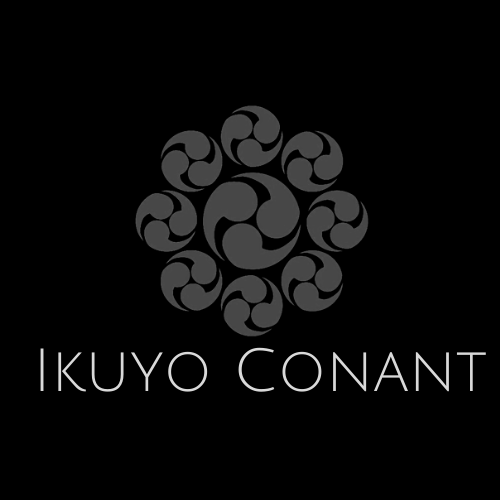Kotodama
Many Japanese use religious thoughts and rituals in daily activities. People’s thoughts are often reflected as aphorisms and taboos. They avoid negative words for certain occasions, so that bad omens do not bring any negative consequences. Since Japanese beliefs are a combination of Shinto, Buddhism, Taoism, Confucianism and various indigenous folk beliefs, it is hard to define one Japanese belief system.
When Saicho introduced Tendai Buddhism in Japan (8th century), he added native Japanese beliefs. Kukai, who opened Shingon Buddhism during the same period as Saicho, incorporated preexisting mountain beliefs in his teachings. Kukai believed in the power of words.
In a later period when new Buddhist sects emerged, some of these groups added the power of words or chanting as well as invocation rituals. Since Japanese religion is an incantatory religion, beliefs in the magic of words or sacred objects are inevitable.
Kotodama is the spiritual power that is possessed in words. Ancient Japanese believed that as with animals and humans, words hold spirits.
Before Chinese influence, Japanese belief systems were not well organized. Early Japanese thought was characterized by a sense of community with people and Kami. The image of Kami is not an absolute authority or a transcendent being. Kami is the quality that evokes a sense of “awe.” Things that strike awe such as nature, natural phenomena, heroes and family ancestors are Kami to Japanese. This concept was formalized as Shinto only after the influence of Chinese culture; the Japanese needed to distinguish their belief traditions from foreign thoughts. Their beliefs were uniformly named Shinto (the way of Kami), which differentiated these indigenous beliefs from Buddhism (teaching of Buddha), Confucianism (teaching of Confucian) and Taoism (teaching of the way). Territorial and protective spirits were tied to the idea of group identity, and many beliefs were limited to small-localized areas.
In contrast to Japanese beliefs, the newly introduced Chinese beliefs were based on the vertical perspective of a stratified society; all of these beliefs were connected to the belief of a heavenly power and a hierarchical social order under that power. Chinese belief traditions made the Japanese political system efficient and clear. It also helped in defining traditional Japanese social and cultural systems.
Although Shinto has always been the foundation of Japanese belief traditions, the influence of foreign beliefs persisted in the development in Japanese political systems. During the rise of the warrior class and the establishment of the Samurai class, the ruling classes supported the philosophy of Zen Buddhism, but were also influenced by the precepts of Confucianism and Taoism. Japanese spirituality as practiced by the ruling class during medieval times was mostly under the influence of imported disciplines. However, Shinto beliefs and other folk beliefs coexisted with Buddhism among the lower social classes. This complex religious alchemy was well developed along with Budo philosophy; nevertheless the main purpose of religions in Japan remained for incantation and invocation of personal and family protection.
Greater interest in Shinto Spirituality emerged in the late Edo era (18th century) among scholars. One of the scholars who had a interest in souls, spirits, and the world beyond the physical realm was Atsutane Hirata. He heard about a boy named Tengu Boy Torakichi who was a well-known fortuneteller among the peasants. Torakichi learned many different incantations and magic from a mountain man whom he respected as a spiritual master. Atsutane was very interested in the stories this boy told him. He collected the boy’s stories and made a book titled “Senkyo-ibun.”
The collection of this boy’s stories led him to a deeper study in Shinto spirituality and mysticism. Atsutane stressed the primeval image of Kami that was the foundation of Japanese spiritual forces. Atsutane argued that many efforts in the theoretical study of Shinto were based on the borrowed language from Buddhism, Taoism and Confucianism. He wanted to study this native spirituality before the influence of Buddhism. Atsutane’s beliefs were passed on to a few students who later established Shinto schools based on particular aspects of Shinto theories and early Japanese beliefs.
In early 19th century, many old Shinto texts were discovered in storage in various shrines in Japan. The discovery of these old texts gave an impetus to study the true meaning of Kotodama among Shinto students. The key individuals for the Kotodama movement were Shido Yamaguchi and Kodo Nakamura. They believed that the essential source of Kotodama is the primordial energy, which creates multiple phenomena in the universe. The successor of some schools stated that each Japanese sound (75 sounds all together) contained a spirit. Later this idea was developed to an incantation belief. The followers of Kotodama believed that if one mastered the use of these sounds and words, that person could control the spirit for healing and invocation.
Shinto prayers of Norito used for blessings were believed to have the power of Kotodama. Norito is the word of Kami. Some people believed (or believe) that Norito carry the power of curses or blessings.
References:
“Shinto no Hon” Gakushu Kenkyusha, 1998.
Kotodama © Ikuyo Conant, 2002

